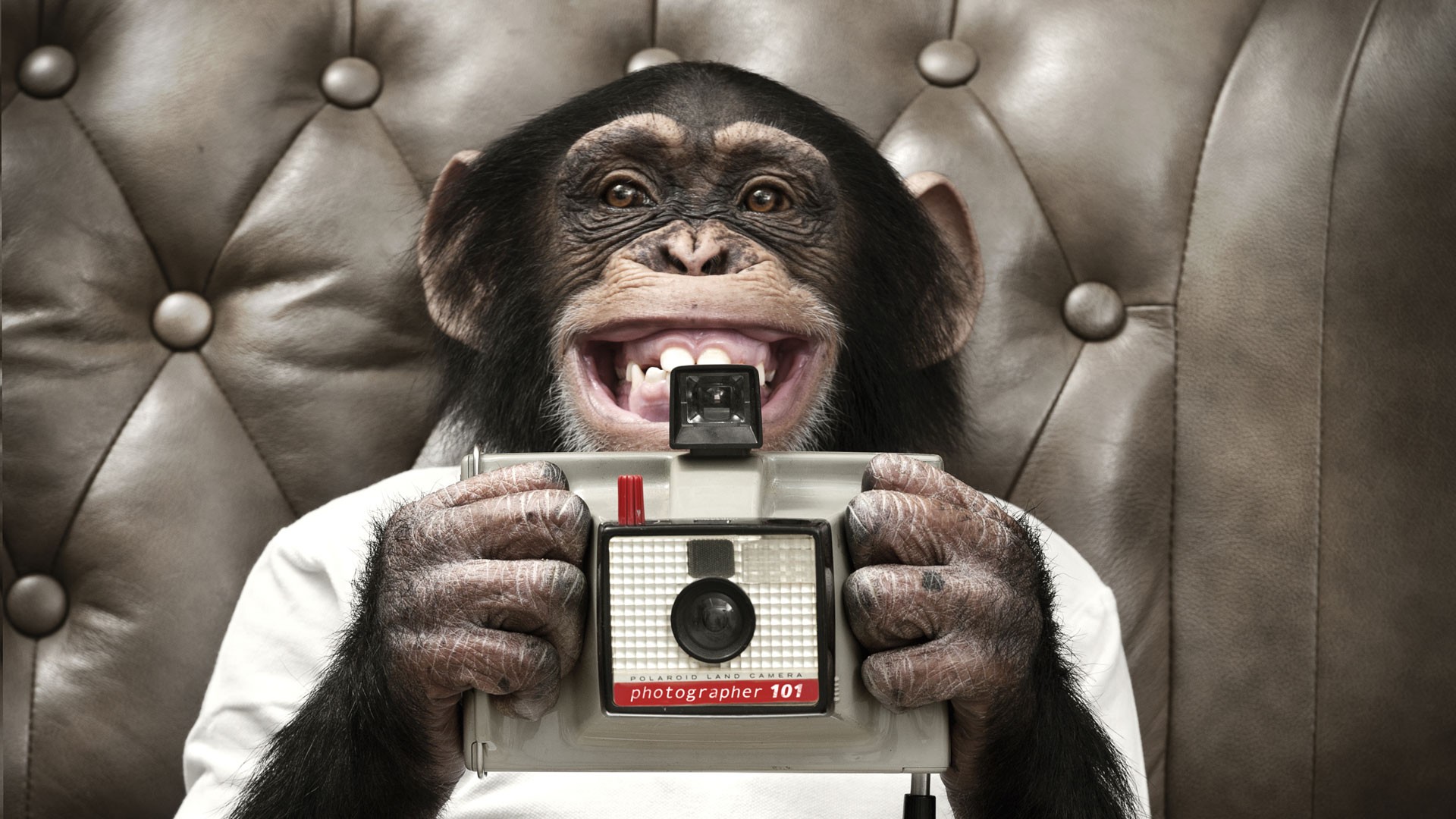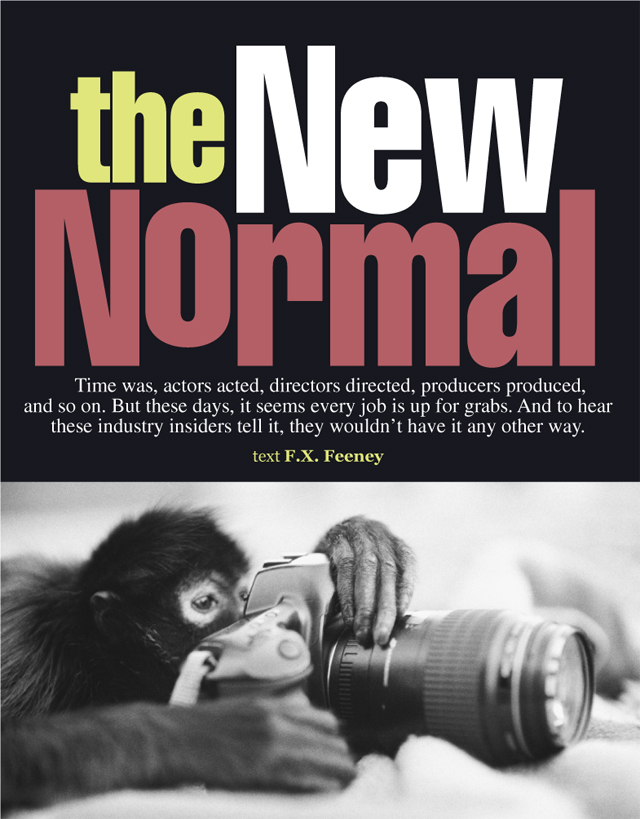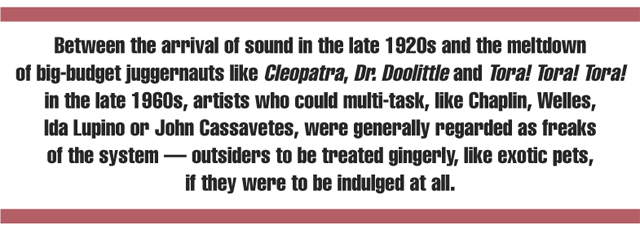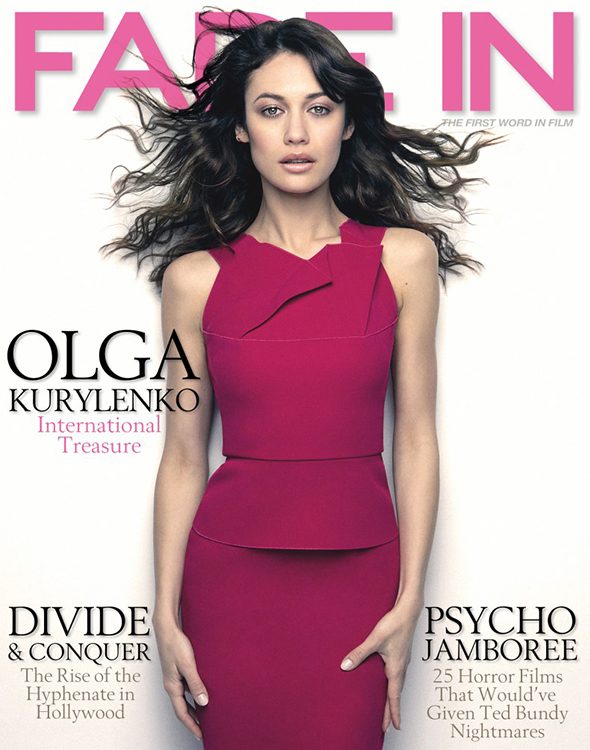Somewhere in the celestial archives of pop culture, a magazine cartoon from the 1950s shows a circus seal balancing a beach ball on his nose as he tells his audience: “Frankly, I’d rather direct.”
This wish to take charge of one’s career is as old as the very word “career” — especially in show business. Yet until fairly recently, anybody who took that risk would face resistance at the very least, or perhaps mockery or, worst of all, a fate of career jail or exile if you managed to persuade the powers that be to give you a shot, and you failed.
Nowadays, things have changed — a lot. In 2013, an actor or screenwriter taking charge of his or her destiny is no longer a fluke. “It’s a necessity at this point,” says David Karp, a leading agent at William Morris Endeavor whose clients include Robert Redford, Jay Roach and Oren Moverman. “Studios aren’t making forty movies a year anymore. If you want to get anything done, you have to think across the spectrum.”
Glance in any direction, and a new world of upward mobility is in force. In addition to the usual suspects (Ben Affleck, George Clooney) a wave of new talents, mostly actors (Ryan Gosling, Teresa Palmer, Scoot McNairy and Brit Marling, to name a few), but including songwriters and musicians (Trent Reznor, Jack White), even producers (Adi Shankar, for one), trying on any number of creative hats, including directing, redefining themselves and — very likely — the future of movies.
The reservations are historic:
“Orson, which one of you do I fire?”
This was the complaint of studio chief Harry Cohn to writer-director-producer-star Orson Welles as they analyzed — as amiably as they could, for they liked each other — the dismal failure of The Lady from Shanghai in 1947. Starring Rita Hayworth, it should have been a smash in a marketplace where Hayworth was the leading box-office attraction. But as Cohn saw it, Welles had taken too many risks — and he himself had risked too much on Welles. “I’m never going to make a picture like that again,” he declared. “Not because of the script, you understand — it’s the script I approved, and I liked it, and I don’t care what anybody says. It’s just because nobody should be the director and the producer and also the leading actor in any picture. There’s no way that he can be fired. Somebody has a deal like that — what’s the use of me owning my own studio? I might as well be janitor.”
Such was the studio wisdom, for as long as that system prevailed. Between the arrival of sound in the late 1920s and the meltdown of big-budget juggernauts like Cleopatra, Dr. Doolittle and Tora! Tora! Tora! in the late 1960s — into which inferno such low-budget smashes as Easy Rider roared to the rescue — artists who could multi-task, like Chaplin, Welles, Ida Lupino or John Cassavetes, were generally regarded as freaks of the system — outsiders to be treated gingerly, like exotic pets, if they were to be indulged at all.
Following the new-generation blast of super profits that briefly blessed actors Dennis Hopper and Peter Fonda after turning director-producer and (with Terry Southern) co-writers of their landmark biker saga Easy Rider, the 1970s briefly became a heyday for any filmmaker wearing more than one hat — the so-called “hyphenate.” Easy Rider costar Jack Nicholson directed Drive, He Said and Goin’ South. Warren Beatty co-directed Heaven Can Wait with actor-screenwriter Buck Henry, then went solo for Reds, Dick Tracy and Bulworth. Elaine May and Mike Nichols pivoted from a performing team into separately becoming prominent directors. Moviegoers grew used to top filmmakers popping up in front of the camera — John Huston, Roman Polanski — and a general ferment of try-anything stimulated the many prodigious films for which that era is remembered.
But after Jaws and Star Wars redefined the business once again as blockbuster-happy, a dream-factory work ethic took precedence over individual exploration. The only two hyphenates to survive the frost in style — each knocking out a film a year for the next forty years — were Woody Allen and Clint Eastwood, who thrived by working thriftily and (rather prophetically) by establishing “brands.” Otherwise, big-ticket franchises ruled from then to now. Raiders, Rocky and Rambo sequels, as well as their current heirs, Spider-Man, Iron Man and Sherlock Holmes, revived the mega-business model along classic big-studio lines.
Careers were defined accordingly. Rare mavericks of the mainstream — James Cameron, Kathryn Bigelow, Curtis Hanson — or wildcatters of the indie world — Spike Lee, Mike Leigh, Jim Jarmusch, Richard Linklater, Steven Soderbergh and Quentin Tarantino — might have escaped hidebound definition, but even so were strictly renowned as directors. Kevin Costner and Mel Gibson had to fight tooth and nail to oversee Dances with Wolves and Braveheart. Despite being validated by Academy Awards, they ultimately closed their deals to direct the films only by submitting to the migraine of starring in them as well.
Since roughly 2009, such blockades have melted like polar ice. More filmmakers are working as hyphenates than ever before, and the trend is increasing exponentially.
Why the change? As with the shift in 1969, myriad cultural and business earthquakes have shaken the industry. One was the near collapse of the world economy at the end of 2008, but the argument can be made for an earlier, more local event: the Writers Guild strike, which lasted exactly 100 days, from November ’07 to February ’08, and according to various estimates cost the economy of Los Angeles at least $1.5 billion and the film industry itself $500 million in “lost opportunities.”
Brutally translated into private pocketbooks, that was an enormous mass of people out of work — creative people. The type who, with their backs to the wall, can generally be relied upon to self-start, if not reinvent themselves altogether. If people can’t create jobs, they will create opportunities. In an interesting parallel, the psychological dust bowl of the 1988 strike, which crippled the city for the better part of a year, triggered a comparable wave of indie work (sex, lies & videotape, Reservoir Dogs, Sling Blade) that gave rise to the “’70s Redux” atmosphere that would characterize the best work of the ’90s.
What’s more — as much as hyphenates were still an anomaly in the minority — outstanding examples were parading by. For three years in a row, 1995 through ’97, actors who’d written themselves juicy roles — Emma Thompson, Billy Bob Thornton, Ben Affleck and Matt Damon — walked away with Academy Awards, not for their acting, but for their screenplays. When George Clooney repeated the feat in 2005, it confirmed an odd new statistical likelihood that an actor in search of an Oscar would do well to get something on paper. Certainly the impact of such examples on other actors and writers cannot be under-estimated.
A vital factor since 2008 has been pure convenience. The means of production have proliferated as never before. The internet is not only speeding communications, it’s led to innovative phenomena such as Kickstarter, where like-minded creators can make money cross-pollinate. Digital cameras and Final Cut Pro are in the hands of the many, while major studios have become risk-averse about financing any picture above ten million or — paradoxically, absurdly — for less than a hundred.
The fabled paradigm shift redefining the movie business at present is so enormous that no one can see clearly to the other side of it. Even Steven Spielberg and George Lucas have taken to predicting a “meltdown” and an “implosion,” thanks to big-money’s addiction to blockbusters. And, hey — Hello, Jaws! Hello, Star Wars! — once the rest of us get over laughing at the irony that these are the two guys who invented the modern blockbuster, the fact is they’re by far the biggest canaries to swoon in the mineshaft, and that means the whole medium is up for grabs.
“Now you can bring in new people who ten years ago would never be allowed to get behind a camera and raise money,” says Sarah Self, who represents Dustin Hoffman, Diablo Cody and Russell Brand at William Morris Endeavor — as well as musicians Trent Reznor and Jack White, both of whom have grown serious about directing. “The idea of Jack or Trent directing a movie is totally plausible. Studios are less confident that they know how to evolve with the business; the barriers are falling down. People have to be more scrappy and open, but I’ve never been so excited in my whole career.”
Agencies as a whole are shape-shifting in their approaches to promoting talent. Instead of being relegated to one category — or even a single representative — multiple fields of ambition are now encouraged, and artists have more than one agent at their back. “It’s more like the ecosystem of launching filmmakers,” says Self’s colleague at WME, Mark Ankner. “We’ve entered this really cool renaissance period where people pursue bold ideas they ordinarily wouldn’t get to do in the studio system. They’re also finding new ways to distribute these movies, and to engage audiences.”
Jenny Maryasis at United Talent Agency sketches an identical portrait: “The team is now behind every client.” Her individual artists may include Lena Dunham of Girls and Rodham writer Young Il Kim, but her fellow agents Bec Smith — who reps David Michôd and Miranda July, to name two — and Steve Cohen, who handles Owen Wilson and Corey Stoll (the perfect Hemingway in Woody Allen’s Midnight in Paris) are involved as needed, along with every other agent in the UTA roster.
Indeed, Stoll —Juilliard-trained as an actor and director — is gearing up to do both now that Woody and a stellar turn in the Netflix hit House of Cards paved the way for Cohen to put him together with producer Guillermo del Toro for a new TV series, The Strain. “I’ve always been attracted to anybody who’s hungry to do more than one thing,” says Cohen. “Right from the start, even before it became the thing to do, my naïve thought was: ‘If they have more than one talent, it’ll be easier to get them a job.” He has specialized in helping standup comics like Jon Lajoie and Kevin Hart develop themselves across YouTube, Twitter and other new-paradigm platforms, the better to translate their followings into hit TV series and films.
“There are now so many buyers out there now,” Choen says. “The market is starved for creators: builders, planners, people who put stuff on paper — who film stuff. The buyers are not just traditional studios and TV networks, but new players in the internet and digital space who are bridging the gap to where we’ll be in five years.”
Dividing one’s talents and conquering the world from a variety of angles is for many artists a simple matter of self-preservation. For brothers Mark and Jay Duplass — writers-directors-cinematographers-editors and sometimes actors — it’s a form of guerilla warfare: “We’d pitch stuff,” says Mark, “and if they didn’t go for it, we’d go out and make the movie anyway. That started impressing people. They’d say, ‘We better back these guys, or they’re going to do it without us, and we’ll miss out.’” Adds Jay: “That reputation attracted actors. They recognized that we were merciless about getting things made, they could trust their work for us wouldn’t be wasted.”
For executive Adi Shankar, who’d long wanted to try his luck as an actor, it seemed healthier on the whole to put business first — concentrating on 1984 Private Defense Contractors, the company he’d formed in partnership with Spencer Silna — and act only in the various shorts they produce for fun, between features. Intuitively enough, director Marjane Satrapi recently intuited Shankar’s ambition and invited him to play a small role in her new film (which he and Silna are producing). Though he never asked for the favor, he has embraced it with gusto, had himself fitted with braces and his face grunged-up so that his own mother didn’t recognize him when he showed her the rushes.
“The people I look up to most are the multi-hyphenates,” he says, “but I’m not fulfilling some master plan. I really enjoy producing — working with the filmmakers we’ve worked with. As much as I love acting and want to keep at it, had I pursued it from the start in the traditional way, full time, I would have been taking jobs for a paycheck, working in things I’m not passionate about. This way, I can do it whenever I want to.”
Some become hyphenates by default. For Scoot McNairy, whose star has lately risen with vivid turns in Argo and Killing Me Softly, In Search of a Midnight Kiss and Monsters — was the only way to get himself noticed: “I looked around and saw that I was going to be doing one-line bit parts in other people’s movies if I didn’t do something about it.” Brit Marling, tired of being “the cute blonde in horror movies,” wrote her way out of that trap in 2011 with Another Earth, Sound of My Voice and her forthcoming The East. Teresa Palmer, who was tempted to give up acting altogether prior to her success in this year’s Warm Bodies, has newly seized the initiative and is actively co-writing scripts, working on a documentary and collaborating with her boyfriend Mark Webber on an intimate drama whose feeling of privacy takes inspiration from Cassavetes’ work with Gena Rowlands. Palmer is studying how Webber works with an eye toward directing herself: “I dream of being a woman with a voice.”
For Guillaume Canet, who transitioned smoothly from leading man to leading filmmaker with Tell No One in 2007, and this year makes his American debut with Blood Ties, the driving force behind testing himself as a director is freedom, pure and simple: “I don’t want to do stuff that doesn’t appeal to me, just for money. I want to be the one who chooses.” He is as tough on himself as his critics: “I have to fight my regrettable tendency to make films too long,” he has said. Even so, he prefers directing to acting, despite its hardships: “With acting, you have to be ready to switch on and, say, cry at a moment’s notice, while with directing a film, it never stops. You’re always thinking about it, day and night. I put so much pressure on myself when it comes to making films. I’m always unsatisfied with myself and my work.”
That he is on to his own vices regarding length is an encouraging sign, for if the freedom that comes with being your own director has any downfall, it is that there may be no one around to tell you “No” when you most need to hear it. Kevin Costner has lately been restored to a welcome prominence with his Emmy-winning performance in last year’s miniseries Hatfields & McCoys and his bravura work in Man of Steel, but he emerges from a long desert that swallowed him up after he pursued his muses without restraint into the follies of Waterworld and The Postman.
That the planets should now be aligned so encouragingly for the creative and ambitious is a rarity to be marveled at.
When has there ever been this much ripe opportunity, this much freedom to chart one’s own course, if one has stories to tell? You’d have to look back to the very early days of cinema, when Charlie Chaplin — fresh off the boat and working for Mack Sennett, in 1914 — watched his leading lady Mabel Normand clumsily attempt to direct herself, and him, in a little short called Mabel at the Wheel, and, seething with frustration, thought to himself: “Frankly, I’d rather direct.”







